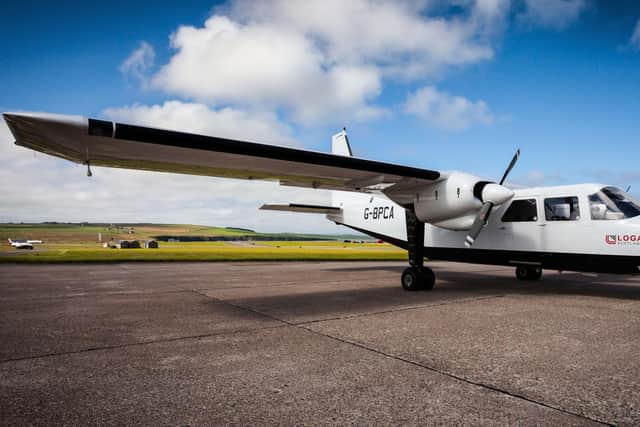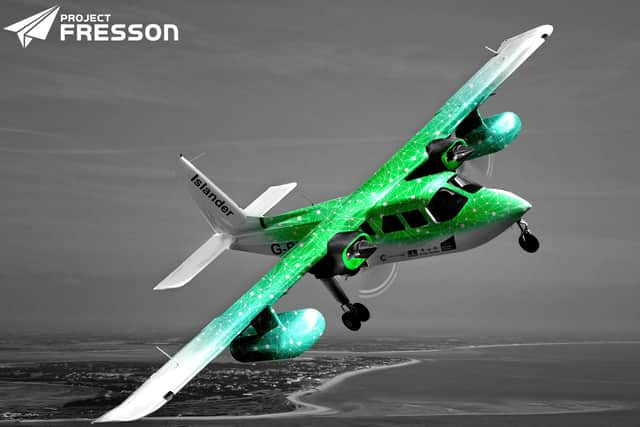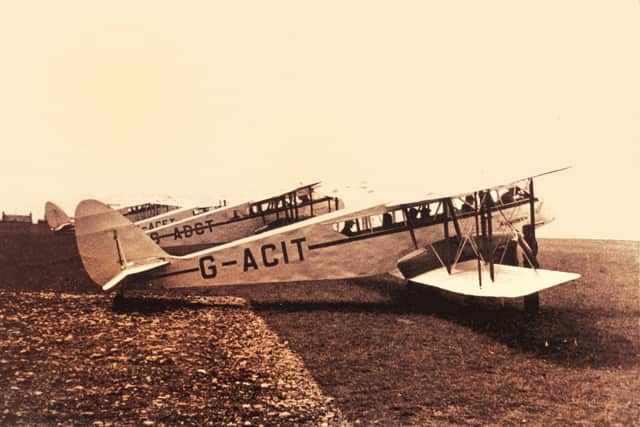How Orkney is helping to shape the future of flight with hydrogen-powered planes – Alastair Dalton
A Britten-Norman Islander, of a type which first took off in 1965 and is still operated by Loganair, could provide the world’s first hydrogen-powered passenger flights in Orkney in less than three years.
The venture has been named Project Fresson, in memory of the aviator who established Orkney’s first air links 90 years ago.
Advertisement
Hide AdAdvertisement
Hide AdI confess I knew little about the aircraft and nothing about the man until I wrote a story about the project, which gave me the opportunity to delve into a fascinating new book which links them, Telling Aircraft Tails: A History of Britain’s Airlines in 40 Aircraft by Guy Halford-MacLeod.
The publication traces British aviation through the stories of individual aircraft, including an Islander, registration G-AWNR.
After the company was founded on the Isle of Wight by John Britten and Desmond Norman, more of their Islanders have been built than any other British aircraft – 1,250 – and it remains in production.
Loganair was one of the first airlines to buy the nine-passenger plane, which Halford-MacLeod said effectively had kick-started the carrier, and without which its Orkney inter-island services would never have happened.
In 1967, Loganair used an Islander to launch what was later recognised as the world’s shortest scheduled flight – the hop between Westray and Papa Westray, which can take just 47 seconds.


Remarkably, Loganair has been operating Orkney’s inter-island flights with Islanders ever since. G-AWNR joined the service in 1972 and continued with Loganair until 1977.
The airline’s Orkney flights had resurrected services pioneered three decades earlier by Captain Ted Fresson, which hadn’t resumed after the Second World War.
Fresson was among savvy business people in the 1930s – including bus operators – who realised that rather compete against the well-established railways, the best opportunities lay in the remoter areas they did not serve, or so well.


Advertisement
Hide AdAdvertisement
Hide AdHe launched flights between Inverness, Wick and Kirkwall in 1933, with his airline, Highland Airways, expanding to fly within the islands and on to Shetland.
One of his aircraft, a De Havilland DH 84 Dragon, G-ACIT, also features in Telling Aircraft Tails – a design modified from a bomber being developed for the Iraqi air force.
The Dragon, which could carry eight passengers, flew from Longman Field, Inverness, the town’s original aerodrome near the present-day Kessock Bridge, which has been renamed Fresson Business Park in his honour.
In 1934, he also used it for Britain’s first airmail service, to Orkney.


Fresson continued to operate the aircraft for such flights during the war, and recalled almost crashing as he rounded the cliffs of Hoy in a 70mph blizzard when a “terrific squall” nearly turned the Dragon on its back, the 1,000lb cargo of mail which had been piled to the roof “tumbling all over the cabin”.
Fresson’s Dragon might now be preserved at the Science Museum’s Wroughton centre near Swindon, back in its Highland Airways colours, but his pioneering spirit will be very much to the fore in the hydrogen-powered version of its successor – the Islander – seeking to write the next chapter of Orkney’s aviation history.
A message from the Editor:
Thank you for reading this article. We're more reliant on your support than ever as the shift in consumer habits brought about by Coronavirus impacts our advertisers.
If you haven't already, please consider supporting our trusted, fact-checked journalism by taking out a digital subscription.
Comments
Want to join the conversation? Please or to comment on this article.